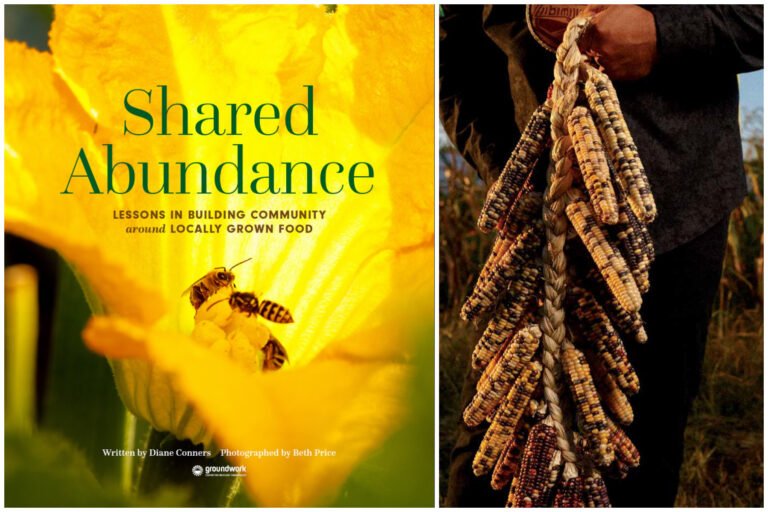The seven stars of kai Māori literature
It’s at all times time to reconnect with kai Māori – however Matariki is the right reminder to take action. Charlotte Muru-Lanning shares her favorite books so as to add to your kete as you be taught extra.
That is an excerpt from our weekly meals publication, The Boil Up.
Because the Matariki cluster begins to twinkle above us in early winter, it alerts the Māori new 12 months, or te mātahi o te tau. These stars are a cue to come back collectively, to replicate, to recollect, to acknowledge these we have now misplaced and to set intentions. As nicely, the constellation alerts adjustments in our surroundings, a change of seasons and a time to hunt or harvest. Amongst these whetū are beneficiant clues as to what the following 12 months may convey. For our tūpuna, astronomy was woven into the kete of the on a regular basis – and that features kai.
The strands that hyperlink Matariki with kai are plentiful, and as somebody who engages with the world round me via meals in fairly an obsessive manner, I see the attract of trying to create some sort of codified menu of what or how we should always eat to rejoice the season. Particularly as a part of the broader reclamation of traditions which have arisen from better consciousness of Matariki. However there’s a complexity to this. Matariki traditions are manifestations of views and relationships with the pure atmosphere that differ from place to position. Even the variety of stars relies on the place you might be: some iwi recognise seven stars whereas for others there are 9, and in some components of the nation, you possibly can’t see the cluster in any respect. That’s to say, there’s no singularity to how finest mark the season via meals.
As a part of the broader reclamation of traditions and practices, I like to consider Matariki as a immediate to reclaim kai Māori in all its variations and idiosyncrasies. Since colonisation, our connection to our kai has been severed via land alienation, urbanisation, inequality, environmental degradation and assimilationist state insurance policies. It means information of our kai hasn’t at all times been handed down, and within the public sphere, it’s largely absent. Matariki is a chance to flip this.
One of many starkest reflections of how kai has till very not too long ago been excluded from our nationwide culinary consciousness is the historical past of cookbooks in Aotearoa. Within the e book from Kai to Kiwi Kitchen, meals anthropologist Helen Leach wrote that traditionally, New Zealand cookbooks “merely ignored Māori methods of cooking” and generally even portrayed “Māori cookery as uncivilised and alien in its personal homeland”. That’s to not say we’d like the printed phrase to inform us we have now culinary traditions. The mātauranga or information of kai Māori exists finest in reminiscences which can be handed down, via conversations, or consuming or absorbing what’s occurring within the wharekai, however books are helpful with regards to establishing cuisines and guaranteeing a continuation of custom.
On that be aware, I wished to share seven books on kai Māori that I cherish. These are pukapuka that maintain a heap of data about kai; taonga I return to repeatedly.
Māori Girls’s Welfare League Recipe Ebook
Of all of the books on my bookshelf, it’s this, which I’ve (by chance) stolen from my mum (sorry Mum!) that I like essentially the most. Recipes vary from the standard like kaanga waru (steamed corn pudding) to extra up to date like cheese souffle, and the copy I’ve is full of tiny biro stars added by my mum subsequent to recipes she wished my dad to cook dinner for her. The primary cookbook that included Māori cooking was printed in 1908, but it surely wasn’t till the Nineteen Seventies Māori renaissance motion that wāhine Māori started publishing their very own recipes in printed cookbooks, geared towards a Māori viewers. Of those, essentially the most vital is unquestionably this: the Māori Girls’s Welfare League Recipe Ebook. These cookbooks, Helen Leach wrote, did greater than “disseminate cookery directions – they concurrently asserted mana Māori and Māori id”, paving the way in which for ongoing revival of Māori culinary traditions.
Māori Meals and Cookery by David Fuller
This 1978 e book by Pākehā writer David Fuller prompted me to enroll in a library card earlier within the 12 months. And whereas components of the e book are admittedly quite dated, I can look previous that for its abundance of element on conventional kai Māori, components, preparation and origins – like accounts of nikau cooked in hāngī until it shaped sugar crystals or the preparation of kooki (dried shark). A treasure of a e book.
Hiakai by Monique Fiso
A modern masterpiece of a e book that’s full of historical past, custom, tikanga and really helpfully, sensible ideas for foraging and gathering components. Interspersed are recipes that apply mātauranga handed down, in addition to avant-garde culinary strategies. That is kai Māori futurism at its most interesting.
Te Ika a Māori: The Battle for Māori Fishing Rights by Brian Bargh
So far as kai Māori goes, seafood is a pillar – a meals supply that has sustained us for hundreds of years. And but, over the course of a century, Crown coverage, in a number of methods, labored to dispossess Māori from entry. Te Ika a Māori tells the important story of the battle for Māori fishing rights.
Māori Cookbook
There’s not an entire lot of knowledge on this cookbook however from what I can inform, it was printed in 1996 (somebody please right me if I’m mistaken) and most of the recipes appear to be direct copies of the Māori Girls’s Welfare League e book talked about above. What units it aside is its 11 pages of complete directions on getting ready a hāngī – with beautiful hand-drawn photos in addition.
Te Mahi Oneone Hua Parakore: A Māori Soil Sovereignty and Wellbeing Handbook
For Māori, soil is greater than only a place to develop kai or construct upon, it’s taonga and an ancestor. This 2020 handbook, edited by Jessica Hutchings and Jo Smith, digs into Māori relationships with soil, linking that to soil and kai safety and extra broadly, tino rangatiratanga.
Kai: Meals Tales from my Household Desk by Christall Low
It’s no shock that this cookbook gained the Judith Binney Prize for Illustrated Non-Fiction on the Ockham New Zealand Ebook Awards earlier this 12 months – it’s beautiful. A compendium of tales, images and recipes for dishes like pani popo, tītī, tahini-drizzled toast and boil up, it weaves the standard with components and strategies one wouldn’t instantly affiliate with kai Māori. I return to this e book usually, for its everyday-ness. As I wrote in a evaluation earlier this 12 months, “in a world the place kai Māori has been seen as one thing relegated to vacationer points of interest or presumed to solely exist in marae wharekai and by no means past, there’s an influence in delineating kai Māori as on a regular basis consolation meals.”






